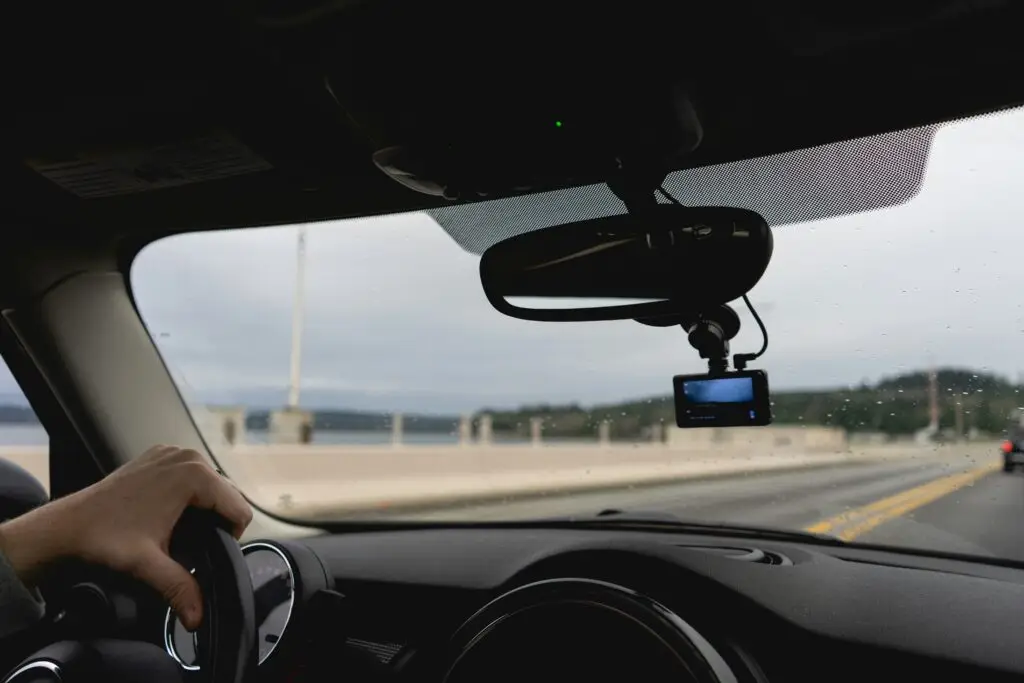How Does Dashcam Evidence Help You Win a Car Accident Case?
Dashcam footage can serve as a crucial piece of evidence in a car accident claim by providing a clear and unbiased account of what transpired. Unlike witness statements and testimonies, which may be inconsistent or influenced by memory, dashcam recordings offer a real-time visual record of the events leading up to, during, and after a car accident. This can help establish fault, support your version of the story, and strengthen your case when dealing with insurance companies or in court.
If you’ve been injured in an auto accident and have dashcam footage, it’s essential to ensure that this evidence is used effectively to support your case. The experienced car accident attorneys at Doehrman Buba Ring have extensive experience handling personal injury claims and can help you utilize your dashcam footage to seek fair compensation.

What Are the Legal Implications of Having a Dashcam in Indiana?
Having a dashcam in your vehicle is generally legal in Indiana, but there are specific considerations to keep in mind to ensure you comply with state and federal laws. For instance, while you are allowed to record video footage of public roadways, you must avoid any obstruction of your view through the windshield. Indiana law prohibits mounting objects, including dashcams, in a way that significantly obstructs a driver’s field of vision.
In regards to dashcam audio recordings, it’s important to be aware of Indiana’s wiretapping and privacy laws. Indiana is a one-party consent state, meaning you can legally record conversations as long as one party involved in the conversation consents to the audio recording. However, if passengers are unaware they are being recorded, this could raise privacy concerns. Ensuring that your dashcam is used appropriately can help avoid legal complications while still preserving clear evidence for your case. Speak to a car accident attorney before presenting any dashcam footage to insurance companies or other parties.
What Should I Do After a Car Accident Where Dashcam Footage is Available?
After a car accident where dashcam footage is available, it is critical to act swiftly to preserve and properly handle the evidence. Start by securing the footage as soon as possible, ensuring that it is saved and backed up to prevent accidental deletion or data loss. You should also avoid tampering with or editing the footage in any way, as this could raise questions about its authenticity or admissibility in your case.
Next, provide a copy of the unedited footage to your attorney. An experienced car accident lawyer can help analyze the video to extract key details that may support your claim, such as the sequence of events, traffic conditions, and negligent behavior by the other driver. If necessary, your lawyer may also work with accident reconstruction experts to strengthen your case further using the footage.
It is equally important to notify your insurance company about the existence of the dashcam footage, as it can play a pivotal role in determining liability and claim resolution. However, avoid submitting the footage directly to the other driver’s insurance company or sharing it publicly without consulting your attorney first, as it could potentially be used against you. Trust your legal team to guide you throughout the process and ensure that the footage is used effectively to support your case.
What Features Should I Look For in a Dashboard Camera?
When selecting a dash camera, it is crucial to consider features that can enhance the video quality and reliability of the footage. First and foremost, prioritize video resolution—look for cameras that offer at least 1080p HD quality to ensure that important details, such as license plate numbers and road signs, are clearly visible. Additionally, wide-angle lenses provide a broader field of view, capturing more of the surrounding environment and reducing blind spots in the recording.
Another essential feature is night vision or low-light capability. Car accidents can occur any time, so a dashcam with infrared sensors or advanced technology to record clearly in low-light conditions is invaluable. Loop recording is also important, as it ensures that your dashcam continues recording by automatically overwriting old footage when the storage is full. If you want to protect specific files from being overwritten, look for a camera with G-sensor functionality, which detects sudden impacts and locks critical footage for later review.
For added convenience, consider dashcams with GPS tracking, which can record the vehicle’s location and speed, and Wi-Fi connectivity, allowing you to easily transfer footage to your smartphone or other devices. By choosing a dash camera with these features, you can improve its effectiveness as a tool for protecting yourself in the event of a car accident.
What is the Best Placement for a Dashboard Camera to Capture the Most Useful Evidence?
When deciding on the best placement for your dash camera, aim for a location that ensures optimal visibility while adhering to legal and safety requirements. The most effective spot for a dashcam is typically the center of your windshield, just below or behind the rearview mirror.
This position provides an unobstructed view of the road ahead while minimizing distractions for the driver. Ensure the camera is mounted securely to prevent it from shifting while driving, which could compromise the recording quality.
For additional coverage, you might consider using a dual-channel dashcam setup, which includes cameras for both the front and rear of the vehicle. Rear dashcams are often placed at the top-center of the rear windshield, offering a clear perspective of traffic or events occurring behind you. Regardless of placement, maintain a clear line of sight by ensuring the dashcam does not obstruct your view of the road or violate local traffic regulations.
Regularly check and clean your dashcam’s lens to avoid dirt or smudges that could affect footage quality. By strategically positioning your dashcam and keeping it well-maintained, you maximize its ability to capture detailed and reliable evidence of all vehicles involved in a car accident.
How Is Dashcam Footage Useful Evidence in a Car Accident Case?
Establishing Fault and Proving Liability
One of the key benefits of dashcam footage is its ability to establish fault in a car accident case. The video evidence can provide an objective account of what transpired before, during, and after the accident. This clarity is crucial in incidents where drivers provide conflicting accounts of the events, making it easier to determine who was responsible for the crash. For instance, the footage could reveal if a driver ran a red light, was speeding, or failed to yield the right of way.
Documenting Traffic Violations
Dashcam recordings can capture specific traffic violations that led to the auto accident. Examples include tailgating, abrupt lane changes, failure to signal, or distracted driving. If the police report is unable to incriminate the other driver, this evidence can be used to demonstrate that the at-fault party violated traffic laws, making their liability clear and strengthening your claim.
Preserving Details of the Scene
Car accidents often occur quickly, leaving involved parties with little time to absorb or recall specific details. Dashcam footage preserves critical aspects of the scene, such as road signs, traffic signals, weather conditions, and road hazards. It can be a very helpful record to compliment police reports. This documented context can help ensure that these key elements are not overlooked or misrepresented in the claim process.
Supporting Hit-and-Run Cases
Dashcams are particularly valuable in hit-and-run incidents, where identifying the offending driver is critical. The footage may capture the fleeing vehicle’s license plate, make, model, or distinctive features, providing crucial evidence to law enforcement and insurance investigators. This information can serve as a foundation for holding the other party accountable.
Countering False Claims
Disputes can arise when one party makes false allegations or exaggerates claims about an accident. Dashcam footage provides a factual record that can be used to dispute untruthful statements. For example, it can disprove claims of reckless driving or demonstrate that the other party was actually at fault. This can prevent wrongful blame and financial liability from falling on you. Dashcam evidence has successfully captured staged and fraudulent rear end accidents, and helped clear the innocent driver.
Assisting Witness Testimony
Eyewitness accounts can sometimes be inconsistent or incomplete. Dashcam footage can supplement or clarify witness testimonies by providing visual evidence of the events. Doctors may use the footage to explain how specific injuries in medical records were caused during the car crash. This can add weight to your claim and help paint a clearer picture of the accident during investigations.
Enhancing Credibility with Insurers
Insurance companies often rely on evidence to assess the validity of a claim and determine settlements. Dashcam video evidence can establish your credibility by showing the events exactly as they happened. This transparency can make your own and the other party’s insurance company more inclined to process your claim fairly and efficiently.
Reducing Legal Disputes
If an accident claim escalates to court proceedings, dashcam footage can reduce the likelihood of prolonged disputes. Whether presented in mediation, negotiation, or court, the visual evidence can streamline the decision-making process, encouraging fair settlements and reducing the need for extensive litigation.
Having dashcam footage as video evidence in a car accident claim can mean the difference between a swift resolution and a drawn-out process. By offering an objective account of the incident and reinforcing your position, it ensures that justice and fairness prevail during both insurance and legal evaluations.
Which Law Firm Should I Hire to Handle My Case with Dashcam Evidence?
When it comes to handling personal injury cases involving dashcam evidence, Doehrman Buba Ring is a trusted and experienced choice. Our team of skilled car accident lawyers specializes in helping accident victims effectively use critical evidence, such as dashcam footage, to build a strong case. With a deep understanding of privacy laws, evidentiary rules, and insurance procedures, we ensure your rights are protected and your claim is presented powerfully.
Hiring Doehrman Buba Ring means gaining compassionate legal support and expert guidance every step of the way. Our car accident attorneys will make sure that any dashcam footage submitted for evidence in favor of securing justice and fair compensation. Contact our offices right away to schedule your free consultation.

